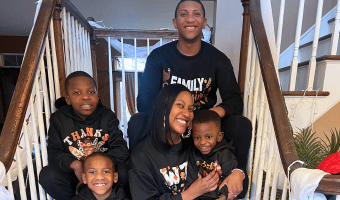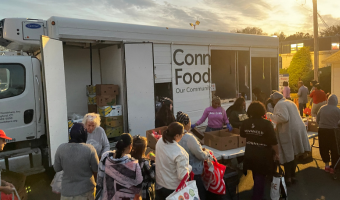July 23, 2020 - With summer in full swing, many families are still feeling the lasting effects of COVID-19 and will for some time to come. At United Way of Greater New Haven, we want to do all that we can to support community members as they recover and rebuild.
One way we can give our neighbors a boost is by providing helpful resources for families who are looking for opportunities to educate their children in this challenging time. From using everyday moments as learning activities to finding specific ways to spark language and learning skills, we want to ensure all kids get a strong start.
For parents or caregivers looking for tips right now, here is a list of easy activities for kids ages 3-5 that will help them reach developmental milestones. We hope you will find these helpful and share them with others.
In partnership,
Jennifer
15 SIMPLE ACTIVITIES FOR KIDS
1. Shape Jumper: Use scissors to cut out different shapes from construction paper. Tell the child to “jump on the circle” and “hop on a blue shape.”
2. Where I Live: Begin teaching your child your home address and phone number. Talk with your child about how each house has a number, and how their house or apartment is one of a series, each with its own number.
3. Flip the Question: Children are especially curious at age 3 and ask “why” – a lot. Instead of giving the answer, try hesitating and then flipping the question to ask your child what they think.
4. What Goes Where: Use everyday chores to teach kids to sort and organize. Make a pile of all the socks while folding laundry, have your child set the table or ask them to put toys of different types on different shelves when they are picking up (e.g., trucks go on this shelf and dolls go on this one).
5. Find the Feeling: Mute the TV and guess how the people or characters on display are feeling and explain what clues made you think whether they were happy, sad or mad.
6. Weather Watch: Create a chart to track the weather. Draw a grid for the month and ask your child to keep track of the weather with a symbol. The sun for sunny days, a raindrop for rainy days, a cloud for cloudy days and so on (you can use stickers too). At the end of a week, you can estimate together what type of weather happened most often, and count how many to be sure.
7. Big/Little, High/Low: Look around the room, the park, the car or anywhere you are, then point to an object. Ask the child if it is big or little or high or low. Take turns pointing at new objects.
8. Tell Me a Story: Reverse story time with your child. Instead of you telling them a story or reading a book, ask them to tell you a story. It could be a made-up story or a story about their day.
9. I Spy: Take turns with your child picking an object in the room and giving each other a hint. Start by saying “I spy with my little eye something…” and then give a hint about the object’s color, shape, size or other simple detail. To help kids with phonics, try a variation where the hint is the first letter the object’s name.
10. Mirror, Mirror: Stand face to face with your child, about a foot apart, and have them attempt to copy all your movements. Reach up and stretch to the sky. Do 10 jumping jacks. Act like an elephant. Take turns so your child has a chance to be the leader.
11. Color Scavenger Hunt: This can be a great indoor or outdoor activity. Make a list of colors and have your child find an object that matches each color on the list.
12. Simon Says: One person is “Simon.” They stand in front of the group and tell the players what they must do. The players must only follow the directions when they begin with “Simon says.” Take turns being Simon.
13. Freeze Dance: Play music and dance with your child, then hit pause in the middle of the song. Encourage your child to freeze in a fun pose or with a funny face. Try different styles and tempos of music.
14. Play “Store”: Set up a store with things around your house. Take turns with your child being the customer and store owner.
15. Beat & Repeat: Create a beat with two claps, and repeat. Then have your child repeat it. Take turns creating beats and repeating it. Anytime someone misses, try again. Over time increase the beats to three, four, five and more.
VIRTUAL VOLUNTEERING: READ TO SUMMER SCHOOL STUDENTS!
Looking for a way to get involved virtually? Local schools need resources for teachers hosting summer sessions. You can share the joy of learning from home by recording a video of you or someone else reading a book! To volunteer, contact Dennis Velasquez at volunteer@uwgnh.org.


